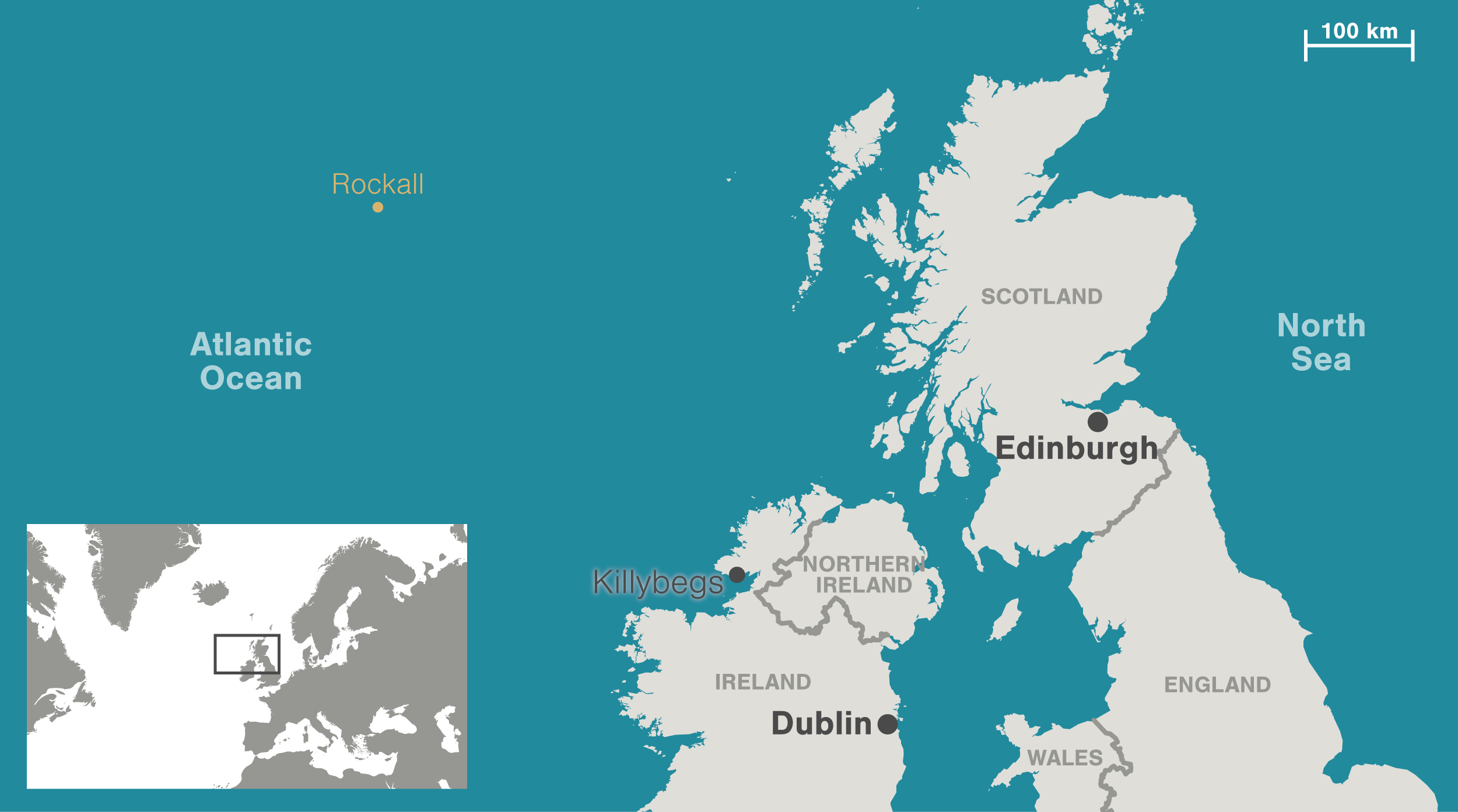A tiny, uninhabitable islet in the North Atlantic has become an unlikely battleground in the fight for fishing rights.

After a week at sea, fishermen round Drumanoo Head before dropping anchor in Killybegs Harbour, Ireland. Carefully, they unload their catch onto the quay, box after box of mackerel, haddock, monkfish, and squid; spindly tentacles and scaled bodies packed tightly under ice. These trawlermen have come back from the North Atlantic, where conditions are treacherous. High waves and powerful gales range across those waters even in the summer months. Protection only comes with the return to Killybegs, sheltered as it is from the worst of the storms up its narrow bay.
This geographic advantage has helped make Killybegs the largest fishing port in Ireland. Last year, its trawlermen landed almost 200,000 tonnes of fish, helping to feed a burgeoning national export market for seafood. A large part of this catch is found around 420 kilometers north in the Rockall Trough, a remote stretch of the Atlantic between Ireland, Scotland, and Iceland. Here, the fish gather in vast schools, especially near the region’s namesake pinnacle: Rockall, a tiny, uninhabited, jet-black outcrop of granite crowned by a pointillist splattering of guano.
This unassuming speck on the map was thrust into the spotlight this past summer when the Scottish government accused Irish trawlermen of overfishing in its territorial waters, before announcing that its coast guard would board any Irish fishing boat venturing into a 19-kilometer zone around the islet of Rockall. Trawlermen from the town of Killybegs, who have been casting their nets in those waters since the late 1980s, were dumbfounded.
“They find it incredible,” says Sean O’Donoghue, chief executive of the Killybegs Fishermen’s Organisation. “The attitude, certainly among my members, [has been], we are not going to take this. They can come and arrest us and we’ll fight this all the way.”
For fishermen in Killybegs—where economic activity is concentrated overwhelmingly in the harbor—any exclusion from the water around Rockall could prove economically disastrous. O’Donoghue estimates that up to a third of the town’s herring and blue whiting catch comes from the 19-kilometer area around the outcrop. What’s more, he argues, Scotland has no right to prevent Irish fishermen from plying these waters. British claim of ownership over Rockall has never been legitimate, he says. “We … as an industry, and as an Irish government, have never recognized that.”
As Edinburgh and Dublin clash in distant boardrooms, Irish trawlermen continue to drop nets around Rockall, now under the watchful eye of Scottish enforcement vessels. For the moment, the outcrop’s status remains uncertain. But with Brexit threatening to cut off access to these waters to European Union trawlermen, Killybegs’s fishing community is set to be the first casualty in a maritime legal dispute decades in the making.....MUCH MORE
Rockall is at least 52 million years old, the battered remnant of an extinct volcano. As high as a four-story building and slightly wider than a city bus, the seamount only began appearing on navigational charts in 1606. Early descriptions portray a familiar, if unusual, sight for mariners crossing the Atlantic. “Rokel [sic] is a solitary island … not unlike [Sule] Stack, but higher and bigger, and white from the same cause,” wrote Captain William Coats of the Hudson’s Bay Company in 1745.
That cause—namely, the abundance of guano deposited by resting gannets and guillemots—along with Rockall’s almost vertical cliffs must have put off most sailors from landing, because it wasn’t set foot upon until 1811 when Lieutenant Basil Hall of the HMS Endymion led a small crew in two longboats to its summit. After having mistaken the islet for a ship under sail, an expedition was mounted as, Hall later wrote, “we had nothing better on our hands.”...